Science |
|
Znanost |
Does the multiverse exist?

|
|
Postoji li multiverzum?

|
A broad conception of the multiverse

|
|
Širok pojam multiverzuma

|
Questionable arguments regarding multiverse

|
|
Upitni argumenti u svezi multiverzuma

|
The dark energy density

|
|
Gustoća tamne energije

|
The string theory

|
|
Teorija struna

|
Absence of evidence

|
|
Nepostojanje dokaza

|
A concept or a well-defined theory?

|
|
Koncept ili dobro definirana teorija?

|
Many issues remain unresolved

|
|
Mnoga pitanja ostaju neriješena

|
|
|
|
|
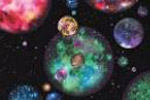
Does the multiverse exist?
In the past decade an extraordinary claim has captivated cosmologists: that the universe we see around us is not the only one; that billions of other universes are out there, too.
There is not one universe - there is a multiverse.
In this view, not only is our planet one among many, but even our entire universe is almost insignificant.
It is just one of countless other universes.
The word "multiverse" has different meanings.
Astronomers are able to see out to a distance of about 42 billion light-years, our visual horizon.
We have no reason to suspect the universe stops there.
Beyond it could be many - even infinitely many - domains much like the one we see.
Each has a different initial distribution of matter, but the same laws of physics operate in all.
Nearly all cosmologists today accept this type of multiverse, which Max Tegmark calls "level 1".
Yet some go further...
 Search for more... Search for more... 
In the past decade an extraordinary claim has captivated cosmologists: that the universe we see around us is not the only one; that billions of other universes are out there, too.
There is not one universe - there is a multiverse.
In this view, not only is our planet one among many, but even our entire universe is almost insignificant.
It is just one of countless other universes.
The word "multiverse" has different meanings.
Astronomers are able to see out to a distance of about 42 billion light-years, our visual horizon.
We have no reason to suspect the universe stops there.
Beyond it could be many - even infinitely many - domains much like the one we see.
Each has a different initial distribution of matter, but the same laws of physics operate in all.
Nearly all cosmologists today accept this type of multiverse, which Max Tegmark calls "level 1".
Yet some go further.
They suggest completely different kinds of universes, with different physics, different histories and maybe different numbers of spatial dimensions.
Most will be sterile, although some will be teeming with life.
A chief proponent of this "level 2" multiverse is Alexander Vilenkin, who paints a dramatic picture of an infinite set of universes with an infinite number of galaxies, an infinite number of planets and an infinite number of people with your name who are reading this article.
Similar claims have been made since antiquity by many cultures.
What is new is the assertion that the multiverse is a scientific theory, with all that implies about being mathematically rigorous and experimentally testable.
Most people are sceptical about this claim.
They do not believe the existence of those other universes has been proved - or ever could be.
Proponents of the multiverse, as well as greatly enlarging our conception of physical reality, are implicitly redefining what is meant by "science".
» Search for more... 
|
|

Postoji li multiverzum?
Tijekom proteklog desetljeća jedna je izvanredna tvrdnja osvojila kozmologe: da svemir koji vidimo oko nas nije jedini; da postoje i milijarde drugih svemira.
Ne postoji samo jedan svemir - postoji multiverzum.
U tom pogledu, ne samo da je naš planet jedan od mnogih, nego je čak i cijeli naš svemir gotovo beznačajan.
On je samo jedan od bezbroj drugih svemira.
Riječ "multiverzum" ima različita značenja.
Astronomi mogu vidjeti do udaljenosti od oko 42 milijarde svjetlosnih godina, što je naš vizualni horizont.
Nemamo razloga sumnjati da svemir tamo prestaje.
Iza njega moglo bi biti mnogo, čak i beskonačno mnogo domena poput one koju vidimo.
Svaka od njih ima drugačiju početnu raspodjelu materije, ali u svima djeluju isti zakoni fizike.
Gotovo svi kozmolozi danas prihvaćaju ovaj tip multiverzuma, kojeg Max Tegmark naziva "razinom 1".
Međutim, neki idu i dalje od toga...
 Potraži više... Potraži više... 
Tijekom proteklog desetljeća jedna je izvanredna tvrdnja osvojila kozmologe: da svemir koji vidimo oko nas nije jedini; da postoje i milijarde drugih svemira.
Ne postoji samo jedan svemir - postoji multiverzum.
U tom pogledu, ne samo da je naš planet jedan od mnogih, nego je čak i cijeli naš svemir gotovo beznačajan.
On je samo jedan od bezbroj drugih svemira.
Riječ "multiverzum" ima različita značenja.
Astronomi mogu vidjeti do udaljenosti od oko 42 milijarde svjetlosnih godina, što je naš vizualni horizont.
Nemamo razloga sumnjati da svemir tamo prestaje.
Iza njega moglo bi biti mnogo, čak i beskonačno mnogo domena poput one koju vidimo.
Svaka od njih ima drugačiju početnu raspodjelu materije, ali u svima djeluju isti zakoni fizike.
Gotovo svi kozmolozi danas prihvaćaju ovaj tip multiverzuma, kojeg Max Tegmark naziva "razinom 1".
Međutim, neki idu i dalje od toga.
Oni ukazuju na postojanje potpuno različitih vrsta svemira, s različitom fizikom, različitim povijestima, a možda i različitim brojevima prostornih dimenzija.
Većina će njih biti sterilna, iako će neki od njih vrvjeti životom.
Glavni zagovornik ovog multiverzuma "razine 2" je Aleksandar Vilenkin, koji oslikava dramatičnu sliku beskonačnog skupa svemira s beskonačnim brojem galaksija, beskonačnim brojem planeta i beskonačnim brojem ljudi s vašim imenom koji čitaju ovaj članak.
Slične su tvrdnje još od antičkog doba davale mnoge kulture.
Ono što je novo je tvrdnja da je multiverzum znanstvena teorija, sa svim što ona podrazumijeva, dakle striktno utemeljena na matematici i eksperimentalno provjeriva.
Većina ljudi je skeptična u svezi ove tvrdnje.
Ljudi ne vjeruju da je postojanje tih drugih svemira dokazano - ili bi to ikad moglo biti.
Zagovornici multiverzuma, osim što znatno povećavaju naše poimanje fizičke stvarnosti, prešutno ponovno definiraju što se podrazumijeva pod pojmom "znanost".
» Potraži više... 
|
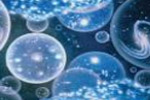
A broad conception of the multiverse
Those who "subscribe" to a broad conception of the multiverse have various proposals as to how such a proliferation of universes might arise and where they would all exist.
They might be sitting in regions of space far beyond our own, as envisaged by the chaotic inflation model of Alan Guth, Andrei Linde and others.
They might exist at different epochs of time, as proposed in the cyclic universe model of Paul Steinhardt and Neil Turok.
They might exist in the same space we do but in a different branch of the quantum wave function, as suggested by David Deutsch.
They might not have a location, being completely disconnected from our space and time, as suggested by Tegmark and Dennis Sciama.
Of these options, the most widely accepted is that of chaotic inflation, and we will concentrate on it; however, most of remarks here apply to all the other proposals as well.
The idea is that space at large is an eternally expanding void, within which quantum effects continually spawn new universes like a child blowing bubbles.
The concept of inflation goes back to the 1980s, and physicists have elaborated on it based on their most comprehensive theory of nature: string theory.
String theory allows bubbles to look very different from one another...
 Search for more... Search for more... 
|
|

Širok pojam multiverzuma
Oni koji su se "pretplatili" na širok pojam multiverzuma imaju različite prijedloge o tome kako bi takvo širenje svemira moglo nastati i gdje bi svi oni postojali.
Oni bi se mogli nalaziti unutar regija u svemiru koje su daleko od našeg, kao što je predviđeno u modelu kaotične inflacije kojeg predlažu Alan Guth, Andrei Linde i drugi.
Oni bi mogli postojati u različitim vremenskim razdobljima, kao što predlažu Paul Steinhardt i Neil Turok u svom modelu cikličkog svemira.
Oni bi mogli postojati u istom svemiru u kojem smo i mi, ali u drugom ogranku funkcije kvantnog vala, kako to predlaže David Deutsch.
Oni možda i nemaju mjesto, pa su potpuno isključeni iz našeg prostora i vremena, kao što predlažu Tegmark i Dennis Sciama.
Od ovih je mogućnosti najšire prihvaćena kaotična inflacija svemira, pa ćemo se usredotočiti na nju; međutim, većinu je primjedbi navedenih ovdje moguće primijeniti i na druge prijedloge.
Ideja je da je svemir u cjelini praznina koja se vječno širi, a u njemu kvantni učinci stalno stvaraju nove svemire poput djeteta koje puše mjehuriće.
Pojam inflacije svemira stvoren je još 1980. godine, a fizičari su ga razrađivali na temelju njihove najopsežnije teorije prirode: teorije struna.
Teorija struna omogućuje da mjehurići međusobno izgledaju vrlo različito...
 Potraži više... Potraži više... 
|
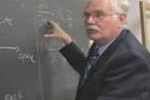
Questionable arguments regarding multiverse
Most multiverse proponents are careful scientists who are quite aware of this problem but think we can still make guesses about what is going on in space.
Their arguments fall into seven types, each of which runs into trouble.
Space has no end.
Few dispute that space extends beyond our horizon and that many other domains lie beyond what we see.
If this limited type of multiverse exists, we can extrapolate what we see to domains beyond the horizon, with more and more uncertainty as regards the farther-out regions.
More elaborate types of variation include alternative physics occurring in regions we cannot see...
 Search for more... Search for more... 
|
|

Upitni argumenti u svezi multiverzuma
Zagovornici multiverzuma većinom su oprezni znanstvenici koji su sasvim svjesni ovog problema, ali smatraju da još uvijek mogu nagađati o onom što se u svemiru događa.
Njihove je argumente moguće kategorizirati u sedam tipova, a svaki od njih nailazi na probleme.
Svemir nema kraja.
Malo se ljudi neće složiti da se svemir proteže i izvan našeg horizonta i da se izvan naše granice vidljivosti nalaze i mnoge druge domene.
Ako ovakva ograničena vrsta multiverzuma postoji, možemo ekstrapolirati ono što smo već vidjeli u domene izvan horizonta, uz sve veću količinu neizvjesnosti u svezi regija koje se nalaze dalje.
Razrađeniji tipovi ovih varijacija uključuju alternativnu fiziku koja se pojavljuje u regijama koje ne možemo vidjeti...
 Potraži više... Potraži više... 
|
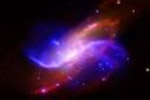
The dark energy density
Fundamental constants are finely tuned for life.
A remarkable fact about our universe is that physical constants have just the right values needed to allow for complex structures, including living things.
Steven Weinberg, Martin Rees, Leonard Susskind and others contend that multiverse provides a tidy explanation for this apparent coincidence: if all possible values occur in a large enough collection of universes, then viable ones for life will surely be found somewhere.
This reasoning has been applied, in particular, to explaining the density of the dark energy that is speeding up the expansion of the universe today.
The multiverse is a possible valid explanation for the value of this density; arguably, it is the only scientifically based option we have right now.
But we cannot test it...
 Search for more... Search for more... 
|
|

Gustoća tamne energije
Temeljne su konstante precizno prilagođene za život.
Izvanredna je činjenica o našem svemiru da fizičke konstante imaju točno one vrijednosti koje su potrebne kako bi se omogućilo postojanje složenih struktura, uključujući i živa bića.
Steven Weinberg, Martin Rees, Leonard Susskind i ostali tvrde da multiverzum daje dobro objašnjenje ove prividne slučajnosti: ako se sve moguće vrijednosti pojavljuju u dovoljno velikoj skupini svemira, onda će svemire u kojima je život moguć zasigurno biti moguće pronaći.
Ovakvo se razmišljanje u najvećoj mjeri koristi za objašnjavanje gustoće tamne energije koja danas ubrzava širenje svemira.
Multiverzum je moguće ispravno objašnjenje za vrijednost te gustoće; nedvojbeno, on je jedina znanstveno utemeljena opcija koju trenutno imamo.
Ali je ne možemo testirati...
 Potraži više... Potraži više... 
|
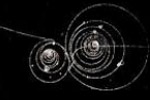
The string theory
The string theory predicts a diversity of universes.
This theory has moved from being a theory that explains everything to a theory where almost anything is possible.
In its current form, it predicts that many essential properties of our universe are pure happenstance.
If the universe is one of a kind, those properties seem inexplicable.
How can we understand, for example, the fact that physics has precisely those highly constrained properties that allow life to exist?
If the universe is one of many, those properties make perfect sense.
Nothing singled them out; they are simply the ones that arose in our region of space.
Had we lived elsewhere, we would have observed different properties, if we could indeed exist there (life would be impossible in most places).
But string theory is not a tried-and-tested theory; it is not even a complete theory.
If we had proof that string theory is correct, its theoretical predictions could be a legitimate, experimentally based argument for a multiverse.
But we do not have such proof.
All that can happen - happens...
 Search for more... Search for more... 
|
|

Teorija struna
Teorija struna predviđa raznolikost svemira.
Ova teorija je prošla transformaciju iz teorije koja objašnjava sve do teorije prema kojoj je gotovo sve moguće.
U svom sadašnjem obliku, predviđa da su mnoga bitna svojstva našeg svemira čista slučajnost.
Ako je svemir jedan, ova se svojstva čine neobjašnjivima.
Kako možemo shvatiti, primjerice, činjenicu da fizika ima upravo ona vrlo ograničena svojstva koja omogućuju postojanje života?
Ako je svemir samo jedan od mnogih, ta svojstva imaju savršen smisao.
Ništa ih ne izdvaja; to su jednostavno ona svojstva koja su se pojavila u našem dijelu svemira.
Da smo živjeli negdje drugdje, promatrali bismo drugačija svojstva, ako bismo zaista tamo mogli postojati (život bi na većini mjesta bio nemoguć).
Međutim, teorija struna nije provjerena i testirana teorija; ona čak nije niti potpuna teorija.
Kada bismo imali dokaz da je teorija struna točna, njena bi teorijska predviđanja mogla biti legitiman i eksperimentalno utemeljen argument za multiverzum.
Ali nemamo takav dokaz.
Sve što se može dogoditi - događa se...
 Potraži više... Potraži više... 
|

Absence of evidence
Although the theoretical arguments fall short, cosmologists have also suggested various empirical tests for parallel universes.
The microwave radiation might bear some traces of other bubble universes if, for example, our universe has ever collided with another bubble of the kind implied by the chaotic inflation scenario.
The radiation might also contain remnants of universes that existed before the big bang in an endless cycle of universes.
These are indeed ways one might get real evidence of other universes.
Some cosmologists have even claimed to see such remnants.
The observational claims are strongly disputed, however, and many of the hypothetically possible multiverses would not lead to such evidence.
So observers can test only some specific classes of multiverse models in this way...
 Search for more... Search for more... 
|
|

Nepostojanje dokaza
Iako teoretski argumenti podbacuju, kozmolozi su predložili i različite empirijske testove za paralelne svemire.
Mikrovalno zračenje bi moglo sadržavati neke tragove drugih mjehurića svemira, ako se, na primjer, naš svemir nikad nije sudario s drugim mjehurićem tipa kojeg sugerira scenarij kaotične inflacije svemira.
Zračenje bi također moglo sadržavati ostatke svemira koji su postojali prije velikog praska u beskrajnom ciklusu svemira.
To su doista načini na koje bismo mogli dobiti prave dokaze o drugim svemirima.
Neki su kozmolozi čak tvrdili da su vidjeli takve ostatke.
Međutim, te se tvrdnje osporavaju, a mnogi od hipotetski mogućih multiverzuma ne bi doveli do takvih dokaza.
Dakle, promatrači na ovaj način mogu testirati samo neke specifične klase modela multiverzuma...
 Potraži više... Potraži više... 
|

A concept or a well-defined theory?
All in all, the case for the multiverse is inconclusive.
The basic reason is the extreme flexibility of the proposal: it is more a concept than a well-defined theory.
Most proposals involve a patchwork of different ideas rather than a coherent whole.
The basic mechanism for eternal inflation does not itself cause physics to be different in each domain in a multiverse.
The key step in justifying a multiverse is extrapolation from the known to the unknown, from the testable to the non-testable.
You get different answers depending on what you choose to extrapolate.
Because theories involving a multiverse can explain almost anything whatsoever, any observation can be accommodated by some multiverse variant...
 Search for more... Search for more... 
|
|

Koncept ili dobro definirana teorija?
Sve u svemu, slučaj multiverzuma je neuvjerljiv.
Osnovni je razlog ekstremna fleksibilnost prijedloga: on je više koncept nego dobro definirana teorija.
Većina prijedloga uključuje kolaž različitih ideja umjesto koherentne cjeline.
Osnovni mehanizam za vječnu inflaciju svemira sam po sebi ne uzrokuje to da fizika bude drugačija u svakoj domeni multiverzuma.
Ključni korak u opravdavanju multiverzuma je ekstrapolacija od poznatog do nepoznatog, od onog što je moguće testirati do onog što nije moguće testirati.
Dobivate različite odgovore, ovisno o tome što odlučite ekstrapolirati.
S obzirom na to da teorije koje uključuju multiverzum mogu objasniti gotovo sve, svako je opažanje moguće smjestiti u neku varijantu multiverzuma...
 Potraži više... Potraži više... 
|
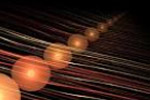
Many issues remain unresolved
Scientists proposed the multiverse as a way of resolving deep issues about the nature of existence, but the proposal leaves the ultimate issues unresolved.
All the same issues that arise in relation to the universe arise again in relation to the multiverse.
If the multiverse exists, did it come into existence through necessity, chance or purpose?
That is a metaphysical question that no physical theory can answer for either the universe or the multiverse.
To make progress, we need to keep to the idea that empirical testing is the core of science.
We need some kind of causal contact with whatever entities we propose; otherwise, there are no limits.
The link can be a bit indirect...
 Search for more... Search for more... 
|
|

Mnoga pitanja ostaju neriješena
Znanstvenici su predložili multiverzum kao način rješavanja dubokih pitanja u svezi prirode postojanja, ali taj prijedlog ostavlja krajnja pitanja neriješenima.
Svi problemi koji se javljaju u svezi svemira ponovno se javljaju u svezi multiverzuma.
Ako multiverzum postoji, je li nastao zbog nužnosti, slučajnosti ili svrhe?
To je metafizičko pitanje na koje nikakva fizička teorija ne može odgovoriti, niti za svemir niti za multiverzum.
Kako bismo napredovali, moramo zadržati ideju da je empirijsko testiranje srž znanosti.
Trebamo neku vrstu povremenog doticaja sa subjektima koje predlažemo; u suprotnom, ne postoje granice.
Veza bi mogla biti i pomalo neizravna...
 Potraži više... Potraži više... 
|
|
|




